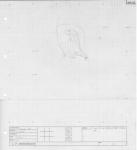Interpretation
- No Interpretations
Stratigraphic Relationships
- No Linked Records
Site Photo
- No records attached.
Description
- composition, compaction, form
- trowel, hand pick
- E-W: 1.18 m
- sand, pebbles, large inclusions
- highly variable: dark brown, dark gray to light brown where exposed
- variable: loose on the east side, compact on the west
- partly cut away/eroded
- artificial
- rocks, clay sand, pebbles, dark purpleish brown tufa, yellow tufa, granite fragments, yellow clay, dark brown clay
- animal bone (horn), human bone, carbon (mostly in the yellow clay), shells
- fragments of worked marble, brick and cement, rounded brick fragments, serpentine porphyry, glass fragments, fragments of painted plaster, bronze fragments (many less than grey layer above), fragments of a mosaic floor, giallo antico, bricks (spicatum), roof tile (fragments)
- A fill of the north half of the bell casting pit SU 3136. Gray clay pulled easily away from its surface. Built into the surface on the north and eastern edge are a line of stones that form a loosely constructed "L" shaped border. The context contains fragments of the paving system cut to mark the bell casting pit. Despite its irregular/highly variable composition the fill was easy to remove since context 3137, the layer on which it sits, is is compact and a very different color from 3136, and since at its north end it abuts skeleton 3102.
- the level of 3136 within the limits of the tomb cut for HRU 3137 may have been contaminated by back fill of the grave from 2006 and exposure
- good
Ceramic Inventory
- 1200 AD - 1299 AD
- Troppi pochi materiali ma probabilmente XIII secolo
| Total fragments | |
|---|---|
| 2 | |
| 1 |

